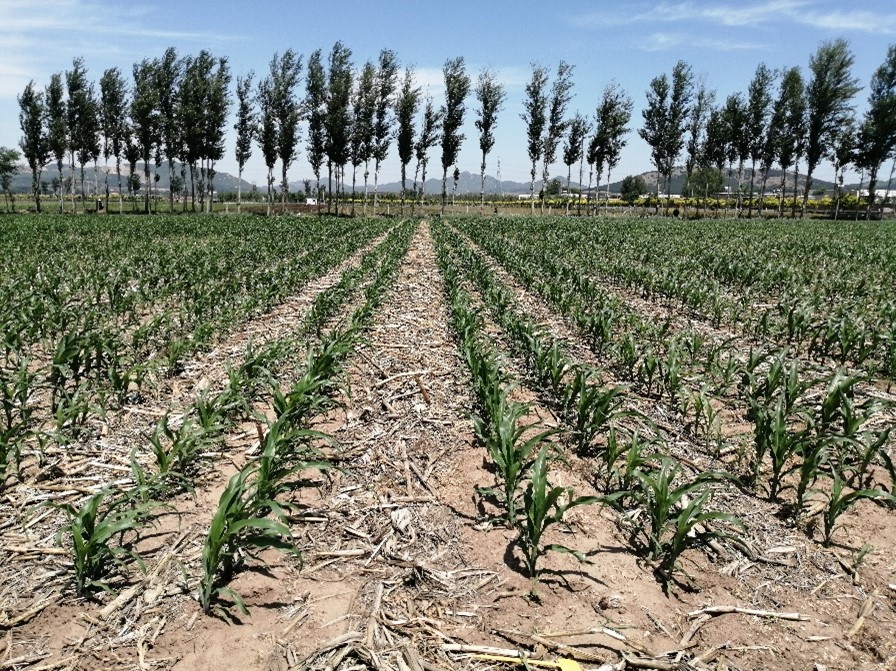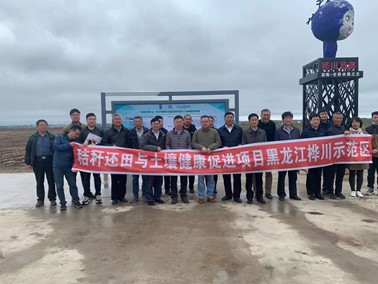Climate Smart Agriculture
Straw Returning & Soil Health Promotion in the North China Plains and Northeast China
Summary
- In response to the SDGs and China’s national strategy of promoting agricultural green development, the project focuses on the development of climate-smart agriculture to mitigate climate change and demonstrates approaches to achieve the SDGs at the regional level in China. It aims to promote straw returning and soil health with the integration and innovation of a climate-smart agricultural technology model through a comprehensive package of technology development, capacity building, policy design and awareness raising in Heilongjiang, Liaoning, Hebei and Shandong.
- The project involves government, enterprises, scientific research organizations and other institutions. Based on the long-term cooperative relationship between the UNDP and Ministry of Agriculture and Rural Affairs (MARA), the project works in close collaboration with MARA, Rural Energy and Environment Agency (REEA), provincial agricultural and rural affairs departments, teaching and research institutions, local agricultural enterprises, with financial support from Syngenta Group China.

Background
- To achieve net-zero carbon emissions and sustainable agriculture, the government has continuously issued new rules and regulations to improve the quality of farmlands. In 2015, MARA and the National Development and Reform Commission (NDRC) introduced the National Sustainable Agriculture Development Plan (2015-2030). Subsequently, MARA released the Technical Guidelines for Green Agricultural Development (2018-2030) and NDRC announced an 85% national target rate for the comprehensive utilization of straws in the Notice on Further Accelerating the Comprehensive Utilization and Banning of Crop Straws. With further development, tillage techniques were emphasized and the Action Plan of Conservation Tillage on Black Land in Northeast China (2020-2025) was issued by MARA and the Ministry of Finance in 2020.
- Climate-smart agricultural production is indispensable for the development of sustainable agriculture. China’s first climate-smart agriculture project, Climate-Smart Major Food Crop Production Project, was launched in He’nan and Anhui Province with the support of the Global Environment Facility (GEF), MARA and the World Bank. The Project has established the production mode of resource efficiency, economic rationality and reducing carbon emissions. The “win-win-win” effects of ensuring food security, adapting to climate change and reducing greenhouse gas emissions were achieved with enhanced adaptability in crop production, which has provided important practical references for green development in China’s agriculture.
- The North China Plain and Northeast China are the country’s main corn and wheat producing regions, contributing over 70% and 50% of the national total. However, due to the poor performance in straw returning, they face a series of issues. The project’s aim is therefore to support the Chinese government’s commitment to sustainable agriculture by identifying and addressing barriers in technology, policy and awareness around straw returning, to share experiences learnt within the country and abroad, and to leverage UNDP’s comparative advantages.
Major Achievements
- 4 sets of integrated straw returning models and conservation tillage suitable for regional characteristics were established, with regional implementation area reaching 1.5 million mu.
- 45 in-field training events for agricultural technicians, farmers and others were organized, with over 14,000 participants
- The average crop yield increased by more than 8%
- Indirect CO2 emissions were reduced by 10% in comparison to traditional tillage methods
Project Outcome
The project aims to:
- Strengthen the evaluation of the effect of straw returning technology
- Optimize the integrated technical model of straw returning
- Launch field training on straw returning technology
- Enhance the promotion of straw returning technology

GESI Component
- This is a GEN1 project at UNDP China.

 Locations
Locations